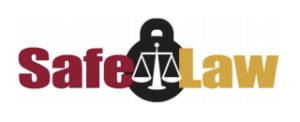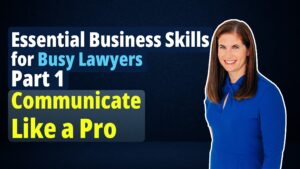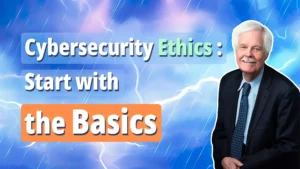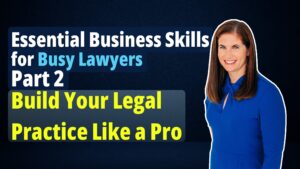If your heart pounds and your thoughts race when you stand up to speak before a group, you don’t have to go straight to the State Bar and turn in your law license.
The truth is that lots of lawyers get nervous about public speaking. This is so whether you’re addressing the Supreme Court of your kid’s Scout troop.
“Public speaking is one of the largest fears nationwide,” writes Joyce Walsack in this article for CO. “Public speaking anxiety, also known as glossophobia, affects approximately 73 percent of the population.”
The good news is you can strengthen your skills – and become a better advocate for your clients – by focusing on a few basics. Such as: prepare thoroughly, so that you know your material inside and out.
“Become totally confident in your subject matter,” says Walsack. “Know why you are giving your talk and why your listeners should care. Practice in front of a mirror, in front of friends and family, in front of a web-cam — and then practice some more.”
Keep your advocacy skills razor-sharp by becoming a member of Alta Pro Lawyers RPG. You get access to the Pro Practice Playbook, Reminger ProLink, Ask the Risk Pro, free webinars and more. Here’s how to join.
Here are five other tips, courtesy of Walsack and CO, for improving your speaking skills without breaking a sweat.
Tip #1: Work on your voice. “According to self-development author Brian Tracy, even those not born with a powerful speaking voice can develop a stronger one with exercise and practice. Record a passage and play it back repeatedly, listening for ways to improve your inflection and articulation. As a public speaker, your vocal cords are your tools, so take care of them. Prepare for speaking engagements by drinking plenty of water and giving your voice sufficient rest.”
Tip #2: Know your venue. “An early arrival is the best gift you can give the event organizers, according to Toastmasters International. It’s a gift to yourself as well — a chance to get familiar with the room and equipment. Do a sound check. Adjust the microphone height if you’ll be using a podium. If using a wireless mic, take the time to get it, and the battery pack, attached properly to your clothing. Study the lay of the land. Know where you’ll enter and exit. Look for potential trip hazards, such as wires taped to the floor. Being comfortable in your surroundings will calm your nerves and make you a better presenter.”
Tip #3: Look the audience in the eye. “An audience is really a collection of individual listeners. Communicate with them as you would a single person: by making eye contact. Motivational speaker Simon Sinek advises speaking directly to an engaged, attentive audience member —people he calls his ‘champions.’ Communicate one-on-one for a complete sentence or thought before moving on to someone else.”
Tip #4: Slow down. “Your goal — whether speaking to a crowd or recording a YouTube video—is to make yourself understood. The way to do that is to speak slowly. Keynote speaker Brent Gleason says that speeding through your presentation will only serve to showcase your nervousness. To help slow your pace he suggests adding deliberate pauses — longer than feels natural — when making important points. Simon Sinek advises putting the brakes on from the very beginning. Avoid speaking as you enter the stage, no matter how awkward it may seem. Standing silently in place for a moment before saying a word will announce to the audience that you are both confident and in charge.”
Tip #5: Use visual aids wisely. “Visual aids can add value to your presentation. Even Christopher Witt, author of ‘Real Leaders Don’t Do Powerpoint,’ agrees that slides, when done well, have a place. If charts, maps and diagrams are necessary to make your point, by all means, fire up the laptop. But, Witt warns, don’t rely on your visual aids for motivation and inspiration. Those should come from your words. If you do use slides, Carmine Gallo, program leader at Harvard’s Graduate School of Design, advises taking advantage of ‘picture superiority’ when producing your deck. Avoid words, he says. Your audience can’t read and listen at the same time. Pictures, however, increase content retention from 10 percent to 65 percent.”
If you have a problem with a client or case, calling Reminger ProLink and talking with an experienced professional liability attorney can prevent a malpractice claim. It’s another benefit of Alta Pro Lawyers RPG. Learn more here.
















